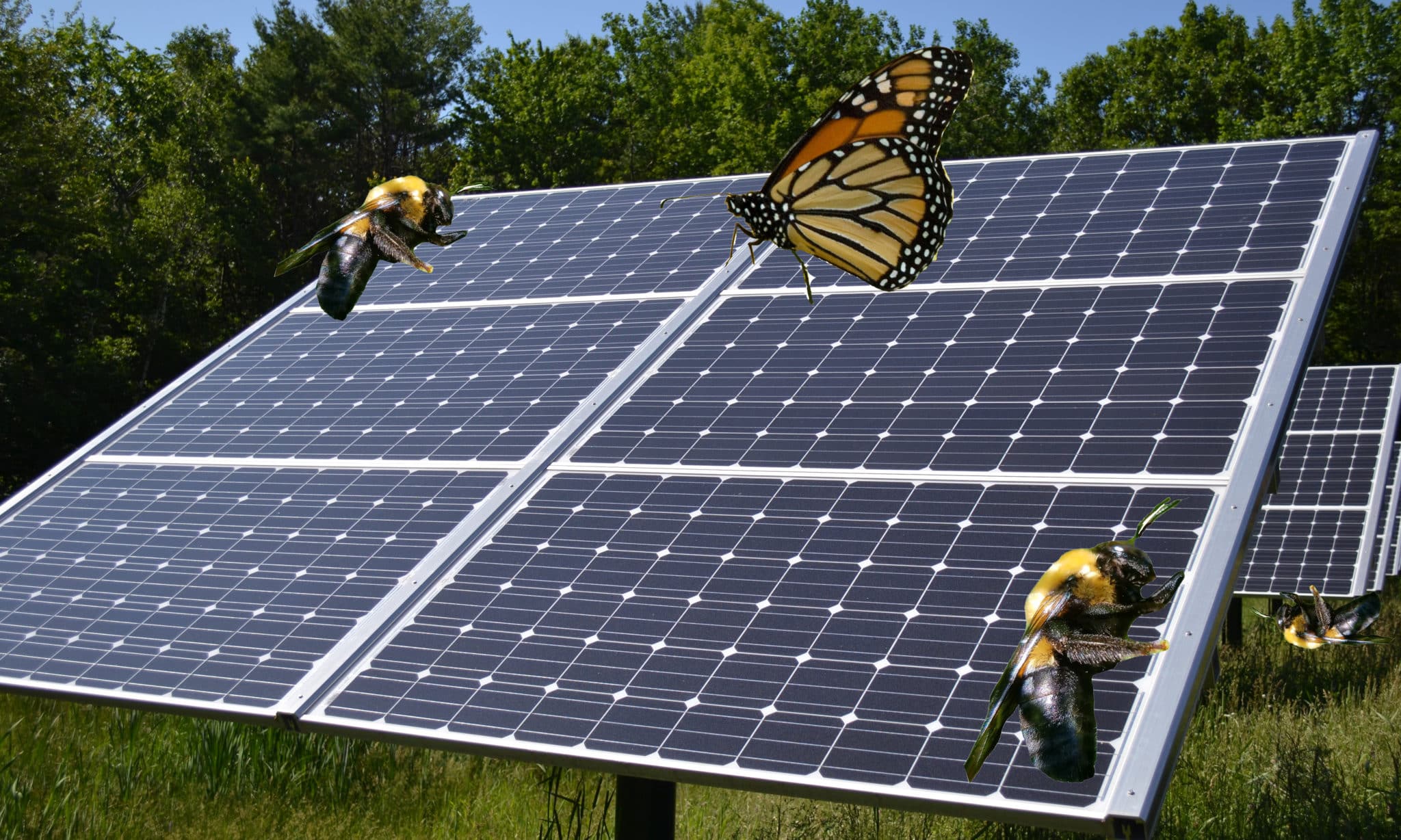
Five Reasons to Plant Pollinator-Friendly Perennials
In late April, the Illinois Senate passed Senate Bill 3214 establishing the “Pollinator Friendly Solar Site Act” and with it the potential to create hundreds of acres of habitat for monarchs and other pollinators on new solar farms across the state. Under the act, which was an initiative of the Environmental Law and Policy Center, the Illinois Department of Natural Resources will establish standards and a “pollinator friendly scorecard” to identify solar installations that are “pollinator friendly.”
Senator Jason Barickman of Bloomington, who introduced the bill, issued a press release stating, “Increasing the amount of habitat for honeybees and butterflies is good for the environment, for farmers and other growers, and for economic growth. We have an opportunity to add substantial habitat acres by creating guidelines that will assist interested solar site owners and operators to convert otherwise wasted space into natural habitat.”
Large scale solar energy projects are set to explode in Illinois thanks to the Future Energy Jobs Act (FEJA). FEJA programs, which are currently being finalized, call for the installation of 3,000 megawatts (MW) of solar in Illinois by 2030, including 400MW of community solar (<2MW) and 1200MW of utility-scale solar projects. While some community solar projects may be rooftop, the majority will be ground-mounted.
We can calculate the land-use footprint of these potential projects to determine the potential for creating pollinator friendly habitat in the state. Assuming an average of 5 acres of land per MW there may be up to 2,000 and 6,000 acres of land utilized for community and utility-scale projects, respectively.
In order to take advantage of this potential, we must ensure that communities, potential community solar subscribers, landowners, and solar companies are aware of the benefits of creating habitat on solar farms. So, without further ado, here are 5 reasons to plant pollinator friendly perennials on solar farms:
- Save Pollinators: Land use changes and pesticide use have been linked to a decline of monarchs, other insects, and birds, many of which are important pollinators in agricultural and natural systems. Pollinator friendly perennial vegetation helps struggling bee, butterfly, and bird populations.
- Increase Native Habitat: Illinois is called the ‘Prairie State’ and yet the prairie in its near entirety has been converted for agricultural production. Establishing perennial native vegetation on solar farms has the potential to provide habitat for the plants and animals that once called the prairie home.
- Reduce Runoff: Establishing perennial vegetative cover reduces surface water runoff and decreases soil erosion. In Illinois, disturbances greater than one acre must obtain a stormwater permit. Establishing perennial vegetation can lessen the time and costs of writing and implementing a stormwater plan.
- Decrease Costs: Turf grass is often established under solar panels and it requires ongoing maintenance such as mowing and pesticide use. Once established, pollinator plantings can be much cheaper to maintain than turf grass, decreasing the cost of the project.
- Improve Soil Health: The deep root systems of native perennial vegetation improve soil structure and drainage. The annual decomposition of plant material adds organic matter to the soil and increases fertility.







